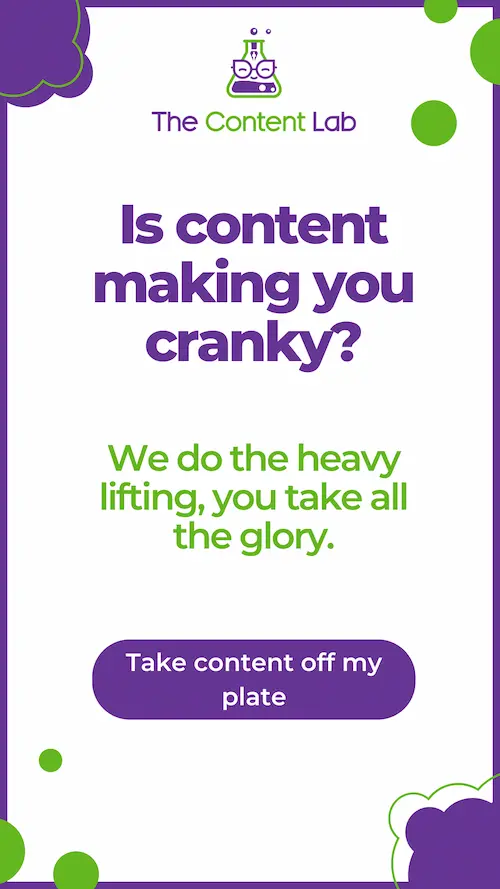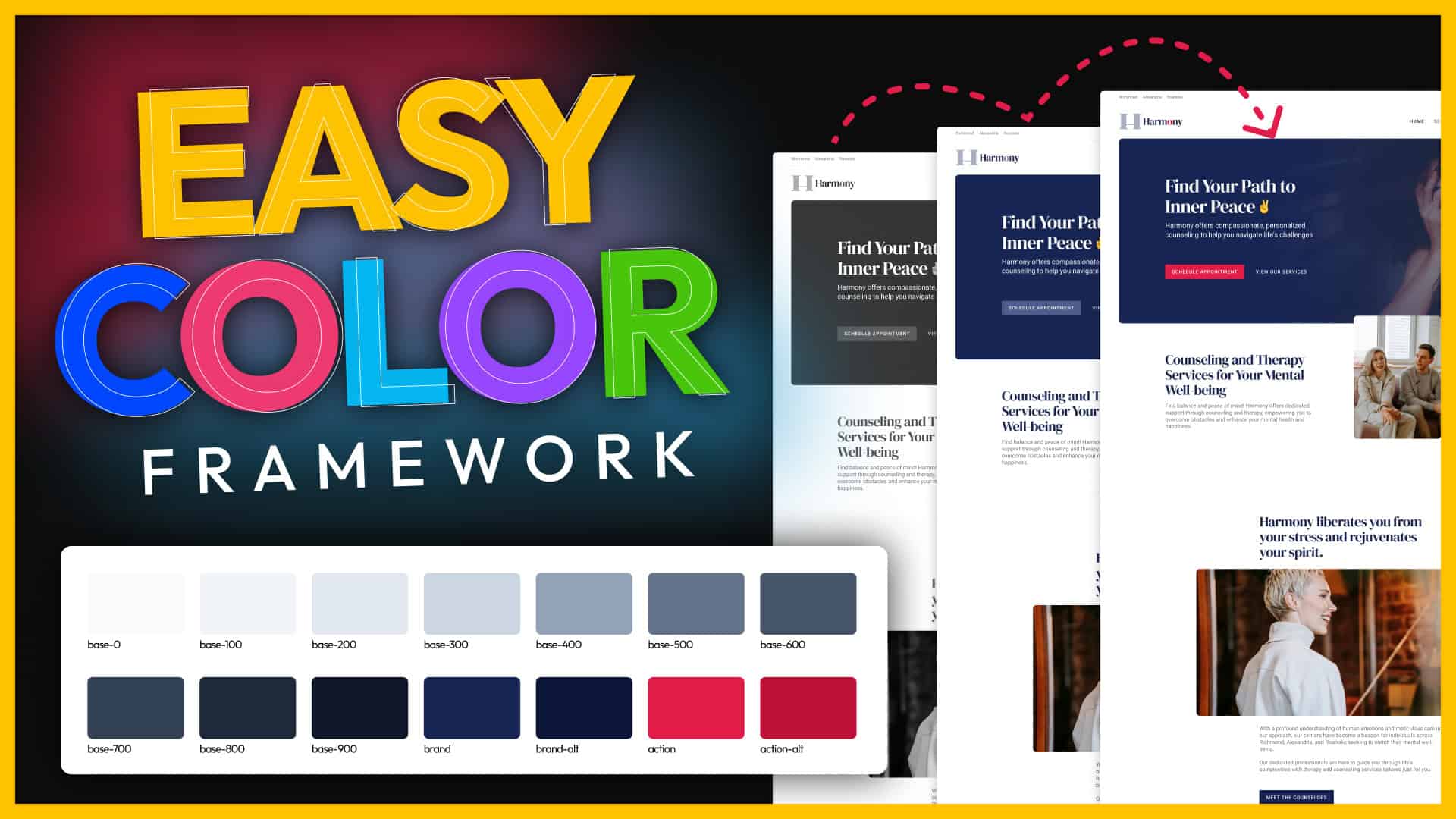No two projects are ever the same.
On one hand, it’s part of what makes the digital agency world such an exciting space to be in. But on the other, it’s sometimes what makes it a total pain in the butt.
We digital marketing professionals need to be super skilled, agile, and adaptive to do what we do – so much so that I occasionally find myself wondering if it’s time to join the circus.
Whether you’re building websites, developing marketing strategies, or overseeing digital campaigns, projects can get a little chaotic from time to time – no matter how long you’ve been in the game.
It comes with the territory. We’ve all had projects get derailed and delayed for whatever reason, and we’ve always gotten through it.
But the most frustrating part of it all is when it starts to cost you money.
Missed deadlines, unhappy clients, and projects dragging on so they interfere with your other work – it all adds up.
The good news is that while you can’t predict the twists and turns of a constantly-changing industry, you can equip yourself with a very particular set of skills to help you make things run as smoothly as possible, whatever the circumstances.
Is having a copywriting process really that important?
I’ve been in the copywriting game for well over a decade, and in that time I’ve created, tweaked, and (I think!) perfected my copywriting process.
Whether you’re looking to write high-converting website copy, create engaging social media posts, complete a persuasive ad writing project – whatever kind of content you need – one thing should always remain the same: your process.
I don’t mean your writing process – that can often look different depending on the project, or even on your mood! (Taking an inspiration shower is a personal favorite. It is exactly what it sounds like.)
The process I’m referring to here is your copywriting project process: Gathering information from your client. Creating project outlines. And delivering the whole thing as clearly and efficiently as possible for smooth execution and the best possible results.
Lack of clarity and lack of resources are a guaranteed way to throw a spanner in the copywriting works, costing you time, money, and resources you simply can’t afford to lose.
Sound familiar? Then, gather ’round and listen up. I’m going to share with you my top copywriting tips and tricks I’ve gathered over years in the biz to help your projects go to plan while making the most of them in the process.
Whether you’ve got an in-house copywriter, a go-to freelancer, or a favorite content writing agency (hello!), these steps are tried and true and sure to totally transform your approach to content for good!
How to speed up the writing process in 5 easy-peasy steps
1. Gather enough (good) information from your client
Trust me, as a professional copywriter, there’s truly nothing more frustrating than being handed over the absolute bare minimum information on a project, and then being expected to write an entire website that encapsulates the brand, showcases their USPs, and connects with their target audience.
If you don’t have enough insight into a brand, how are you supposed to position them in the best possible light? Quite frankly, it can’t be done – at least not to the standard I and my copywriters at The Content Lab strive for on every project.
To gather enough information – and the right kind of information, at that – it’s super important that firstly, your client actually understands their business. You’d be surprised by how many people don’t really know what they do (or why customers should care)!
If they need it, help your clients put a little shape and clarity on their offerings and what makes them so unique. This will make your copywriter’s life so much easier (or yours, if you’re writing it yourself), and they’ll be able to give the project their best efforts, too. (Yay!)
It’ll also make your life infinitely easier if you have a very clear and comprehensive means of gathering this information.
You can jump on a discovery call and input information into a doc yourself, get your clients to fill out a survey, or do a serious deep-dive of your own accord. (A blend of approaches often works best if you want to really capture the full picture!)
Whatever you do, find a way that works for you and ensures you get useful information at the end of the day.
2. Create a detailed project brief for your writer
Now that you’re sure you’ve got enough information to form the foundation of your project, you’re ready to start building your project brief.
Whether you’re building a new website, overhauling an outdated, underperforming one, or trying to increase traffic with a fresh content strategy, you need to be extremely clear about what you want and need before you can ask a professional to start writing.
If you really want the best results, make sure to deliver all the above information and resources you’ve gathered to your writer in the clearest way possible. Good copywriters spend a lot of time researching your client’s niche and competitors. They don’t have time to hunt down basic information about your client, and they shouldn’t have to!
As well as providing a detailed background on your client’s business, outline:
- The goals for the project
- The target audience
- The brand voice and tone
- Any messaging to avoid
- Areas for keyword research
Your writer needs to clearly understand what direction to take the project. For example, if your client needs to be super professional in tone, you don’t want your writer to think they’ve got license for quirky creative writing – and vice versa!
3. Provide blog outlines, sitemaps, and other guides
When you’re outsourcing a task to an external professional, the potential for miscommunication and confusion can be pretty high if you’re not super clear.
Luckily, it’s very avoidable. The best way to keep your project from turning into an endless loop of back-and-forth emails, is by getting super specific.
As part of your project brief, lay out the details of your project scope and outline to save your copywriter time on writing and rewriting notes that could’ve been supplied from the get-go.
Along with all the information mentioned in the previous point, provide your writer with a framework for the project.
If they’re writing a blog post, consider providing a rough blog outline. (Especially if it’s your writer’s first time writing for a particular client!) Writing for the client yourself? Definitely get sign off on a rough blog outline from the client before creating the first draft.
If you’re hiring someone to write content for an entire website, then it’s essential that you provide a confirmed site map for them to stick to. Again, you’d be surprised by how many website projects have come my way, only to have the site map change completely while it’s already being written. It’s incredibly frustrating and wastes a whole lot of time, money, and resources. The same goes for if you’re doing this yourself – get very clear on expectations and deliverables with the client.
For an ad writing project, make sure to detail where the ad will be posted and how that impacts content format, voice, and tone. Advertising content varies so much from platform to platform, it’s important to be clear on what you need.
4. Get set up with a project management tool
Different writers will have different copywriting formulas that work for them. And that’s great!
That said, it’s important to make sure that everyone is on the same page when it comes to collaborating on a project.
There are tons of different collaboration tools you can use to help you streamline communication between different teams and keep the copywriting process on track.
Project management tools can save a whopping average of 498 hours every year!
Imagine that! Almost 500 hours of your time back to focus on other aspects of your work! (Or to simply sit and stare into the abyss – it takes priority sometimes.)
Listen, you’re probably already familiar with most of these by now, but here are some popular project management tools that work well for digital agencies:
For me personally, I’ve found it invaluable to have a centralized online space where I can communicate with my team of writers and my clients.
It’s been an absolute game changer in terms of reducing time spent on organization and menial tasks, while keeping information and timelines from slipping through the cracks. (I owe you my life, Google Calendar <3)
5. Streamline your feedback process
Ooh, mama! I could tell you a few horror stories about how chaotic the feedback process can get if not managed correctly.
It’s such an essential part of the copywriting process. We want to ensure clients are 100% satisfied with the content we’ve delivered, and you want to make sure everything is in line with your client’s brand messaging and positioning.
So why does it sometimes go oh-so-wrong?
Well, unclear processes, that’s why!
Honestly, the best copywriting tip I can give you is to continuously refine your processes until you find something that’s totally foolproof and works for you and your clients every time – and the feedback process is no different.
Whatever you do, it’s essential that you have the same process across the board and with all clients. That way, you won’t be chasing your tail trying to remember what platform you should be using, where to find requests, and how to manage the back-and-forth.
My copywriting agency asks that all clients leave edits and comments in the Google Doc that we send the copy over in – even better if they use the in-built suggestion tool so we can simply accept smaller edits!
As they say, teamwork makes the dream work. So save yourself a load of time and stress with a straightforward and effective feedback process to help you get your projects over the line.
One of the simplest ways to keep feedback to a minimum? Limit feedback to two rounds of edits. Anything over that goes into an additional hourly rate – you’d be surprised how much of those ‘urgent and essential’ changes really don’t matter when clients have to pay for scope creep.
Bonus tip! Use copywriting templates and frameworks
Don’t have the budget to hire a professional copywriter, or need to turn around a project on a super-tight deadline? Don’t panic!
Whether your client is going to provide the copy or you’re going to work on it yourself, using content templates can help you create better content that works for the web.
But where do you find these templates? Well, call me Santa Claus, because I have just the thing for you!
Content Goodies (created by me!) is a comprehensive content writing pack, complete with the copywriting templates my writers use when writing for our clients, so you know they’re the real deal.
The Website Copywriting Accelerator Pack and All-In-One Blogging Pack each come with copywriting courses, best practices, and practical tips to help you improve your own writing while understanding how to write for the web.
You’ll learn everything from differentiating between the active voice and passive voice to writing perfectly balanced copy that appeals to target audiences and search engines so you can craft compelling copy for yourself!
All the benefits of working with a pro when you’re on a budget? Yes please!
Connect with other like-minded digital agency owners to really hone your processes!
Getting perspective and advice from other professionals is always a good idea when you’re trying to find your feet in the digital agency world.
So, why not join in the conversation with thousands of other agency owners and freelancers all navigating the same ebbs and flows?
Everyone is welcome! Join The Admin Bar Facebook group today!






